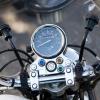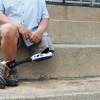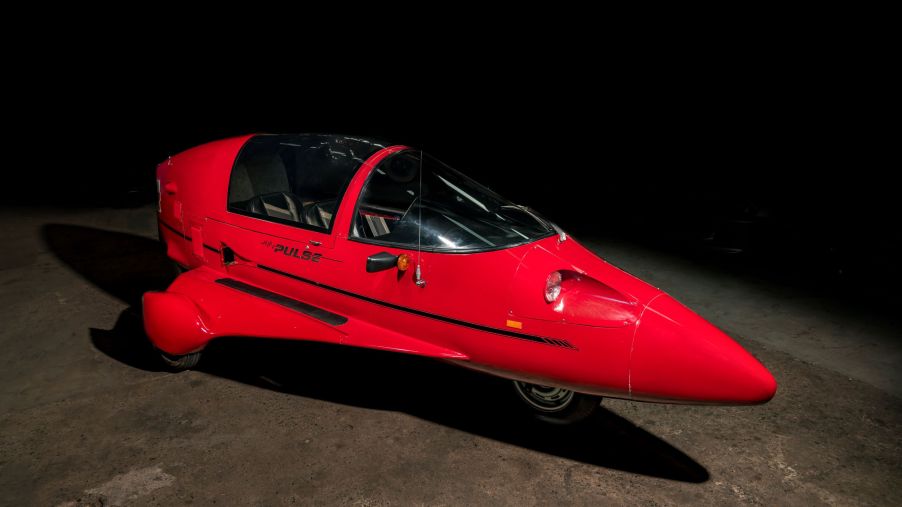
It’s a Motorcycle, It’s a Plane—No, It’s the Pulse Autocycle
The Kawasaki Ninja’s Top Gun spot may have solidified the link between motorcycles and jets, but it didn’t establish it. Even before the first fighter jet took off, some motorcycles took inspiration from planes. And that includes some vehicles legally classified as motorcycles, like the Morgan 3-Wheeler. But if you want a bike that really captures the jet spirit, what you need is a Pulse Autocycle.
Airplane body, motorcycle heart, four-wheel layout: that’s a Pulse Autocycle
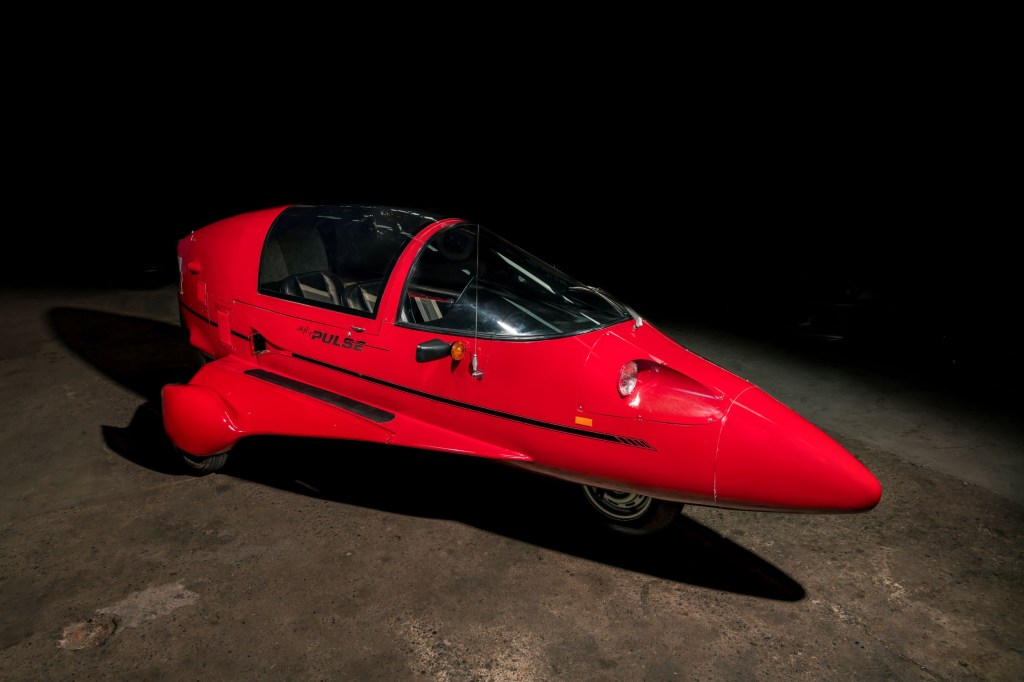
To understand why the Pulse Autocycle looks like a jet plane canopy with wheels, it’s important to know its history.
It’s the brainchild of Jim Bede, who also designed kit airplanes, including the BD-5 Micro in the James Bond film Octopussy, Silodrome explains. When his plane company went bankrupt, Bede tweaked the BD-5’s design and added some wheels. The result was the BD-200, which Bede renamed ‘Litestar.’ While Bede built a handful of autocycles under the ‘Litestar’ moniker, he sold the design rights to Michigan’s Owosso Motor Car Company in 1984. Owosso then renamed the plane-inspired motorcycle as ‘Pulse Autocycle,’ and pushed out examples until 1990.
As its name suggests, the Pulse Autocycle is, well, an autocycle. That means, despite its car-like controls, it’s legally considered a motorcycle in some states. But don’t let the fact that it has four wheels fool you. For one, four-wheeled motorcycles exist. And two, the Pulse Autocycle usually only has two wheels on the ground. It’s only during turns and at stops that one of the wing-mounted wheels touches down, RideApart explains. They essentially function as training wheels; they’re also why the Pulse is classified as “a three-wheeled motorcycle,” RM Sotheby’s notes.
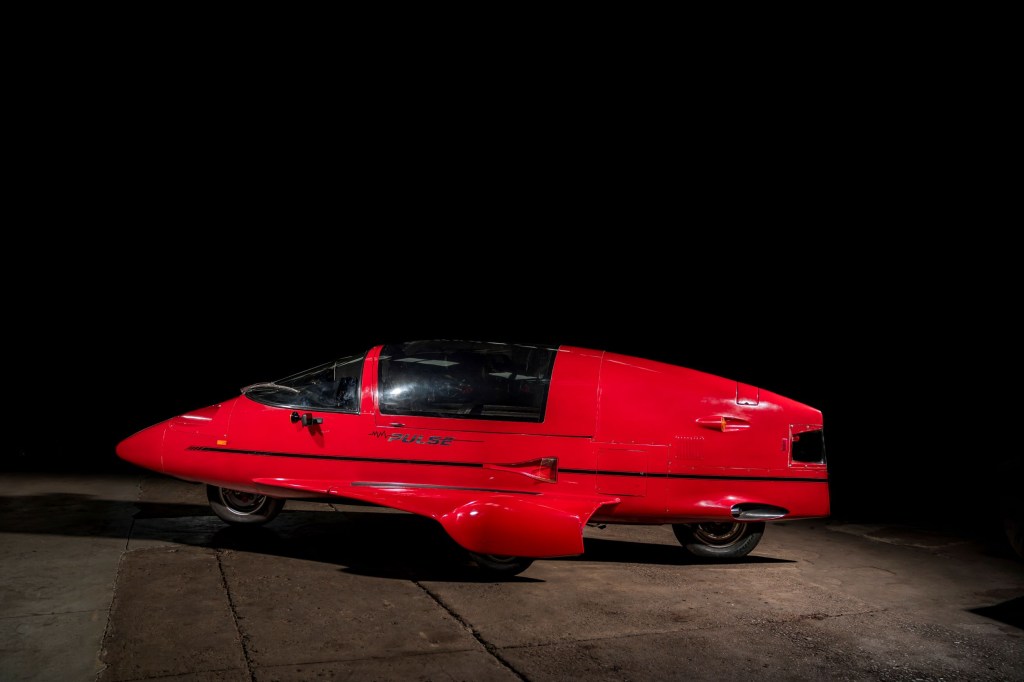
The Polaris Slingshot and Morgan 3-Wheeler, though, don’t look anything like the Pulse Autocycle. But jet fighter-like looks aside, the Pulse is fairly conventional. Its fiberglass body panels, for example, are attached to a tubular steel frame. And it uses a variety of motorcycle-sourced suspension, hydraulic disc brakes, and powertrain tech.
Speaking of, most Owosso-built Pulse Autocycles have a rear-mounted 400cc air-cooled Yamaha parallel-twin. However, Owosso also offered it with the 1085cc and 1182cc liquid-cooled flat-fours from the contemporary Honda Gold Wing. But regardless of the engine, all Pulses came standard with five-speed motorcycle transmissions with an electric reverse gear.
It won’t take flight, but the Pulse Autocycle can cruise with impressive efficiency
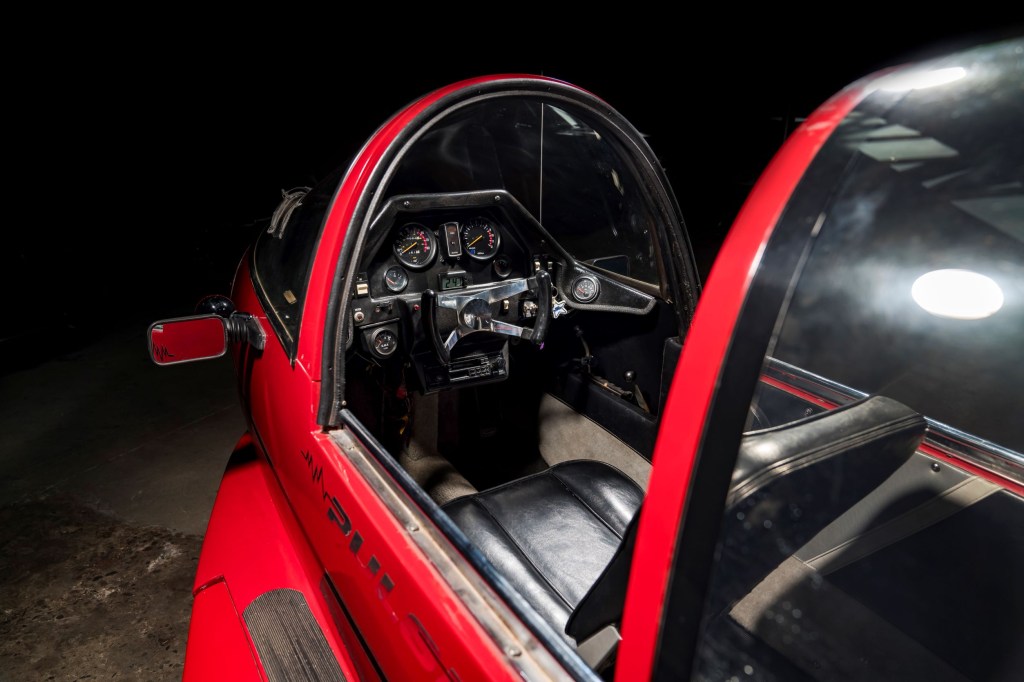
While the 400cc engine didn’t do much for the Pulse Autocycle acceleration-wise, the Gold Wing-powered models offer roughly 94 hp, AutoEvolution says. That doesn’t sound like much, but then, the Pulse only weighs about 1000 lbs. And with its aerodynamic body—complete with sliding canopy—the autocycle can go well over 100 mph, Road & Track reports.
Those aero benefits are why Bede gave the Pulse Autocycle its airplane-like body. Plus, like Alfa Romeo’s winged wonders, the airplane influences give the Pulse a low drag coefficient, which also has fuel-efficiency benefits. Roadshow says the Gold Wing-powered models regularly get 60-70 mpg. Owosso claimed the 400cc Pulses could get 100 mpg, RM Sotheby’s notes. So, even if you’re not going fast, Owosso’s ‘Ground Cruising Recreational Vehicle’ can certainly cover a lot of ground.
And the Pulse Autocycle can cruise more comfortably than some motorcycles. Besides the two tandem seats with lap belts, the enclosed canopy has A/C, a heater, a radio, and even carpeting. And while there’s little-to-no onboard storage space, the Owosso Pulse was available with a towable trailer.
Plus, while the Pulse can’t fly, it can match Bede’s BD-5 star power. It didn’t appear in a James Bond film, and it’s not a DeLorean, but it was in Back to the Future Part II.
How much does one of these jet-styled autocycles cost?
Although Owosso made more Pulse Autocycles than Bede, these vehicles aren’t numerous. Production estimates vary between sources, but it’s generally believed that only 360 Pulses ever hit the road.
That rarity makes it difficult to gauge the autocycle’s appropriate market value. But $15K-$20K, appears to be the general minimum value. RM Sotheby’s, for example, auctioned a Gold Wing-powered 1985 Pulse off for $16,100 in September 2020. Autocycles with trailers are noticeably more valuable than those without, though. Recently, a 1989 example with a trailer failed to sell on Bring a Trailer for $22,250. However, a 1986 Autocycle with a trailer sold in April 2021 on BaT for $45,666.
Even flying on the ground, then, doesn’t come cheap. But then again, even Maverick never rode a motorcycle shaped like a plane.
Follow more updates from MotorBiscuit on our Facebook page.
